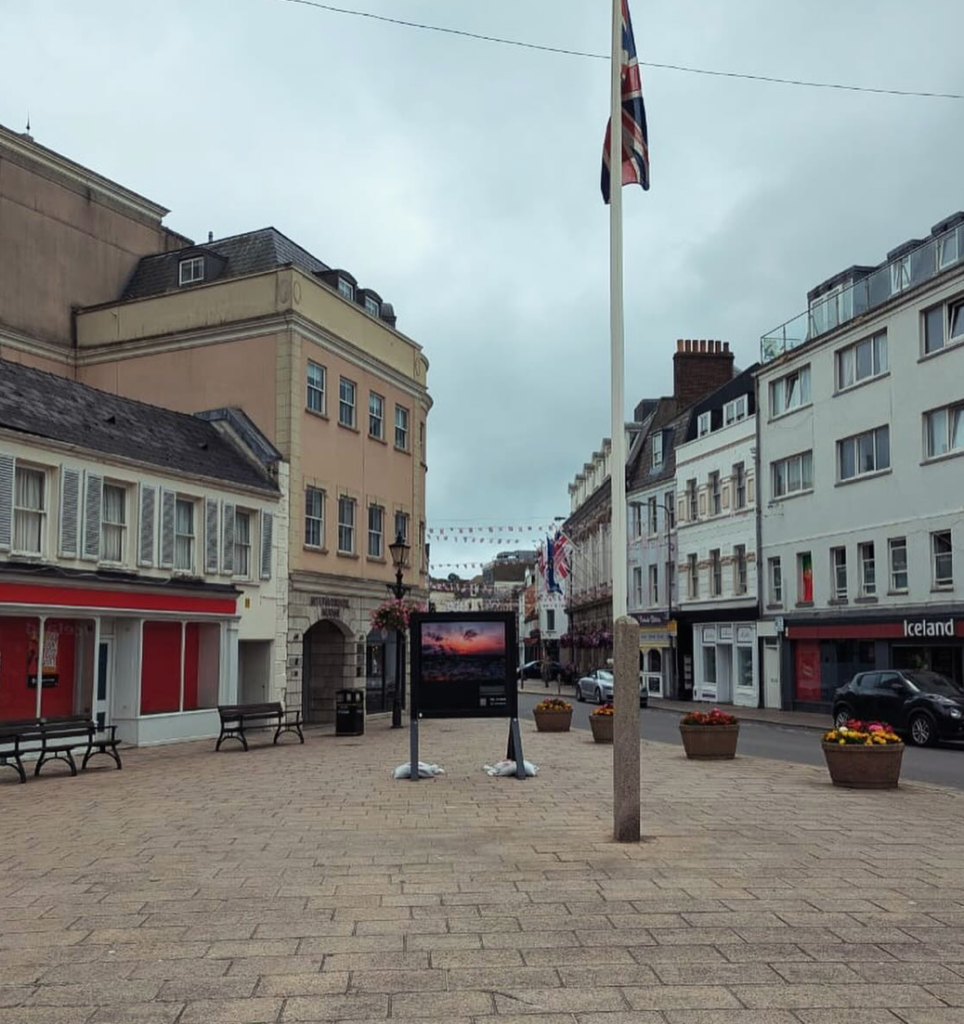The Rohingya experience was a photography exhibition showcased around St Helier, Jersey from the 1st until the 14th of July. This consisted of photography boards strategically placed throughout the high street and most popular areas of town, with 26 images each taken by an extremely talented Rohingya refugee through a partnership named Rohingyatographer – a unique magazine showcasing images from the worlds largest refugee camp. Accommodating these images were QR codes which invited members of the public to scan and listen to the compelling story behind the photograph. The ideology behind this project was to reveal the truth behind one of the worlds most tormented and stateless populations, and indicate the tremendous resilience these people inhabit in their lives just to get through the day.

What is the Rohingya crisis?
For decades, the Rohingya people, a Muslim ethnic minority in Myanmar (specifically the Rakine State) which is a predominantly Buddhist country, have faced a horrifying amount of institutionalised discrimination such as being denied citizenship. These policies have been created by Myanmar’s government since the 1970s, compelling over a million of these people to flee their homes for the sake of refuge and peace. Due to this exiling, the Rohingya people have shown to be the worlds largest stateless population, with an estimated 3.5 million people dispersed worldwide due to this brutal discrimination. Even though the roots and history of the Rohingya people is present in Myanmar dating back centuries, their existence is not recognised by the government.


Already being depersonalised by the ignorance of the Myanmar government, the hardships continue for the Rohingya people. Various restrictions have been put into place on topics such as marriage, family planning, employment, education, religion and freedom of moment – for example Rohingya couples in the northern towns of Maungdaw and Buthidaung are restricted to only having two children.
The most significant exodus (migration) took place in August 2017 when large clashes broke out in the Rakine State, with the military mounting a brutal campaign which destroyed the homes of hundreds of Rohingya people in their villages and resulting in nearly 700,000 people having to evacuate this persecution to Bangladesh. Now, Cox’s Baza in Bangladesh is home to the worlds largest refugee camp, with 1.35 million people living there. This escape from unwarranted military persecution was the result of an attempted ethnic cleansing, one that consisted of widespread violence, attacks and the stripping of basic human rights. This genocide of the Rohingya people has resulted in the deaths of thousands, consisting of brutal forms of abuse and violence that is unimaginable.
Why?
This exhibition is one that is monumental and moving, having great importance in order to give visibility to this crisis. The intention behind this showcase is to provide a plaintive platform for the Rohingya people, from adults to children, to document the truth about their lives, in a raw and authentic way. This is extremely key in shifting the narrative from one of victimhood to a story of strength and tenacity through self-representation and advocacy. Photography has acted in a transformative way to illuminate the difficult experiences these people have gone through and emphasises their suffering and dignity. By doing things like this, charities such as the Jersey Overseas Aid have the ability to ease the unprecedented pain these people experience in their day to day lives by performing activities to positively impact health, hygiene, sanitation, nutrition and protection, both community-based and legally. I think it is really important that this exhibition has taken place in the busiest area on the island because it sparks a conversation about the need for change in Cox’s Baza and for these pressing issues to be addressed immediately, shedding light on the undergoing hope of the Rohingya people who has persevered for decades whilst living through this immense amount of violence. The way that photography can reveal the harsh realities that the Rohingya people are experiencing in this current moment is monumental because it spreads awareness about this crisis and can encourage advocacy and activism for this minority group who are struggling. Alongside this, it is eye-opening to the people of Jersey to realise the privileges that not only do we experience as an island, but the luckiness that economies such as the UK or USA experience and how much this is taken for granted. The visual element behind this experience is key because it means that members of the public get to actually see what these conditions are like instead of reading a piece of information to draw their own conclusions from, providing a more objective approach. Finally, the way that this exhibition has come from the Rohingya people’s own images makes the entire experience more compelling, captivating and moving because not only does it show Cox’s Baza from their own perspective but this would give them a sense of hope because this means that they are able to try to get away from this stressful situation and try to take their minds off of it through creative and artistic ways, giving them the opportunity to express themselves and try to find joy in a specific project.
I thought it would be really significant to involve this in my work through a blog post because not only does it provide more contextual elements into my work but it is something occurring in the world at the moment and is important to be aware of to try and help in any way.






